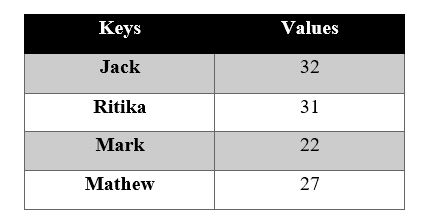

To convert all columns to list of dicts with custom logic you can use code like: data_dict = įor index, row in df.
Which you would like to convert to list of dictionaries like: ] Built-in Dictionary Methods d.clear () d.get (Suppose we have DataFrame with data like: import pandas as pdĬonvert whole DataFrame to list of dictionaries Let's explain the solution in a practical example.

#LIST OF DICTIONARIES PYTHON HOW TO#
Print(df) Read list of lists into DataFrameĪ list of lists in Python is a list object where each list element is a list by itself.In this quick tutorial, we'll cover how to convert Pandas DataFrame to a list of dictionaries.īelow you can find the quick answer of DataFrame to list of dictionaries: df.to_dict('records') We can use these lists to create one single DataFrame as below: Print(df) Create DataFrame from multiple list: Games = ]Ĭonversion of dict into a DataFrame is relatively simple: In Python, dictionaries map keys to values, and these key-value pairs are a convenient way to store data.ĭictionaries are constructed with curly braces on either side and are typically used to hold data that is related, such as the information contained in an ID or a user profile. Python’s built-in mapping type is the dictionary. Tuple is a collection which is ordered and. We can access list using negative index like below: Python Collections (Arrays) List is a collection which is ordered and changeable. If we want to print first three elements of the list: By generating a set of index numbers separated by a colon, we can call multiple values with slices: Question: I want to go from a list to a dictionary to a list of dictionaries (in python) starting with list: list1 111,fname1,lname2,11111,222. List Indices Building a Dictionary Incrementally Restrictions. If we just want to print the middle things from countries, we can do that by making a slice. Dictionaries in Python Defining a Dictionary Accessing Dictionary Values Dictionary Keys vs. If we want to change the string value of the item at index 0 from 'india’ to argentina', we can do as follows:Ī few items from the list can also be highlighted. Print(countries + ‘ is a great country’ ) Modifying A List Print(countries) Concatenate Using a List Save the following content in NameRecords.csv. We can also refer to a discrete item of the list by its negative index number: This is possibly the classical way to do it and uses the standard Python library CSV. The negative index breakdown for the same list countries looks like this: If we call an element greater than 3, it will be out of range and not valid: We can now refer to a discrete item of the list by its index number: We can access and manipulate lists in the same way we do other sequential data types because each item in a Python list has a corresponding index number. The index breakdown for the list countries is as follows: Starting with the index number 0, each item in a list corresponds to an index number, which is an integer value. In this article, we’ll look at a few different ways to work with lists in Python. Lists are a flexible data type that can have values added, removed, and changed because they are made up of smaller parts. When we print this list, it appears exactly as it did when we first created it:Įach item in a list can be called individually using indexing because it is an ordered sequence of elements. Let’s get started by creating a list with items of the string data type:Ĭountries = They allow you to keep data that belongs together in one place, condense your code, and perform the same methods and operations on multiple values at the same time.Ĭonsider all of the various collections you have on your computer while speaking about Python lists and other data structures that are forms of collections: your files, your song playlists, your browser bookmarks, your emails, the collection of videos you can watch on a streaming site, and so on. When working with a large number of similar values, lists come in handy. Lists are characterized by values between square brackets, just as strings are defined by characters between quotes.

A list’s items are the elements or values that make up the list.

In Python, a list is a data structure that is a mutable (or changeable) ordered sequence of elements. Pandas is extremely useful for data merging, reshaping, aggregation, splitting, and selection. DataFrames are the most commonly used data structures in Python, allowing to handle and store data from tables by performing row and column manipulations. Pandas is Python’s most popular open-source data manipulation library and Python Data Analysis Library is the name of this library. Before jumping onto a little complex topic, let’s discuss some basics. Dictionaries and Lists are commonly used objects within Python and often need to be converted into Pandas Dataframe objects.


 0 kommentar(er)
0 kommentar(er)
